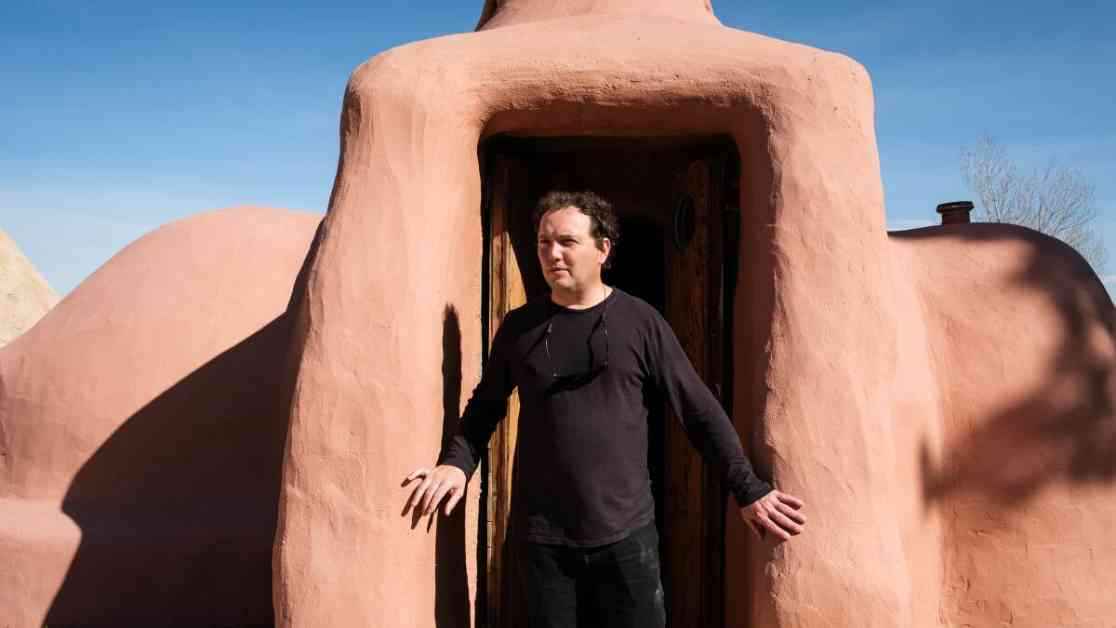In the arid heat of the Mojave Desert, on a warm Saturday in February, a crowd gathers at a unique 2,300-square-foot house in Hesperia, California. The structure, known as Earth One, is no ordinary home – it is a SuperAdobe, a fireproof building constructed with soil, water, sandbags, barbed wire, plaster, and a touch of cement. As visitors explore the vaulted domes and arched ceilings, marveling at the natural lighting and spacious design, they are witnessing a revolutionary approach to architecture that could change the way we rebuild in the wake of natural disasters.
The Rise of SuperAdobes in Los Angeles
The SuperAdobe building style, championed by the nonprofit organization CalEarth, is gaining traction in Los Angeles, particularly after the recent wildfires that ravaged the region. With a surge in interest in natural building methods, more and more people are turning to SuperAdobes as a solution for fireproof housing. The structures, which are not only resilient but also customizable and energy-efficient, offer a unique opportunity to create safe, sustainable homes in a city prone to wildfires.
At CalEarth’s monthly open house, visitors get a firsthand look at the innovative design of SuperAdobes, from emergency shelters to fully permitted homes like Earth One. For attendees like Altadena resident Elliott Hostetter, who lost his home in the Eaton fire, the appeal of these structures lies in their ability to withstand future disasters. As Hostetter reflects on his experience, he emphasizes the importance of taking the time to rebuild right, ensuring that his next home is truly fireproof.
A Beacon of Hope for Fire-Resistant Housing
The vision behind CalEarth’s SuperAdobe design goes beyond just creating safe homes – it aims to revolutionize housing to be resilient in the face of climate change. With endorsements from NASA and the United Nations, the organization has proven the durability and adaptability of SuperAdobes in a variety of environments. From earthquake-prone regions in Nepal to hurricane-ravaged Puerto Rico, these structures have stood the test of time, offering a beacon of hope for communities seeking to rebuild sustainably.
But the road to widespread adoption of SuperAdobes in Los Angeles is not without its challenges. Building with natural materials requires navigating complex building codes and regulations, particularly in a seismic zone like California. However, advocates like architect Ben Loescher see a bright future for earthen architecture in the region, citing the environmental benefits and cost savings of using earth as a building material. As more people like Hostetter and Altadena resident Justin Schachter explore the possibilities of SuperAdobes, the momentum for sustainable, fireproof housing continues to grow.
Embracing a New Era of Sustainable Architecture
As visitors at CalEarth’s open house envision themselves living in Earth One’s inviting spaces, the potential for a new era of sustainable architecture becomes palpable. With initiatives like Marysia Miernowska’s petition urging the city of Los Angeles to embrace fire-resistant, natural building technologies, there is a groundswell of support for reimagining the way we rebuild our communities. By embracing earth materials and innovative design, we have the opportunity to create homes that not only withstand disasters but also contribute to a healthier, more resilient future for all.
In the midst of uncertainty and loss, the promise of SuperAdobes offers a glimmer of hope. As Hostetter looks ahead to rebuilding with his son, he reflects on the importance of making smart decisions for the future. In a city known for its innovation and creativity, the time has come to embrace a new way of building – one that honors the past while paving the way for a more sustainable tomorrow.


